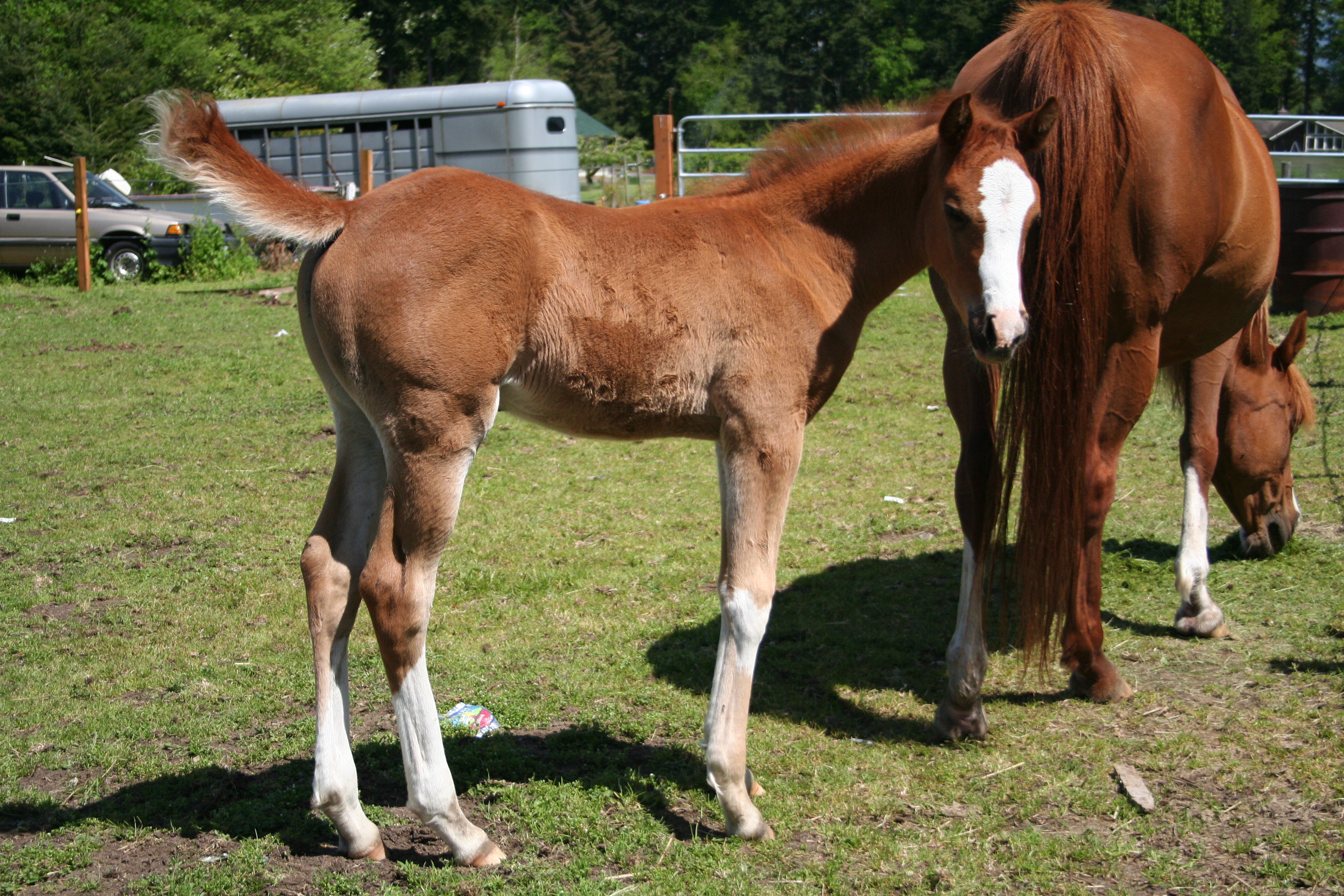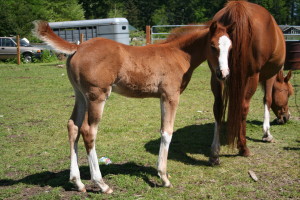The True Cost of Raising a Foal
by Don Blazer, Horse Courses Online
With spring in the air the thought of breeding a favorite mare is enticing. While it’s a personal decision, the chances of making money by selling the foal are slim and none. Unless you can answer three questions with a very positive “yes,” and you have figured a way to cover all the costs involved, you might as well just send me $5,000 and be done with it. Affirmatively answer the following questions, or don’t breed that mare!
1) Is your mare registered?
2) Does your mare have a performance record? That means she performs a specific event (pleasure, racing, jumping, competition trail, etc.) and has won in competition resulting in a permanent breed association performance record. Anything short of that is not a qualified record.
3) Can you identify a specific market that wants to buy the foal? If your answer is “someone who wants a nice horse” then don’t breed the mare.
If your mare doesn’t have a performance record you are going to pay too much for the stallion fee (whatever you pay is too much to breed a mare with no performance record). If you have a mare with a performance record, you can tell the stallion owner you expect (and you’ll get) some reduction of the breeding fee. Try to pay nothing more than a “chute” fee (costs of collecting the stallion for AI breeding) and shipping. If they want more than that be prepared to discover that sale prices for the stallion’s offspring are not that great. Find horses by the stallion that sold at auction; most of the time the sale prices won’t justify the stallion breeding fee.
No matter how great the stallion, you can almost always find an offspring that sold for less than what it cost to breed and raise the foal to his yearling year. The costs of raising a foal the first year will accrue something like this: If the breeding fee is $1,000, you are going to spend another $1,000 in veterinarian and AI expenses. Not figuring in anything for the cost of the mare, you’ll spend no less than $1,800 for the year caring for her. Add in $600 for keeping the foal until he is weaned and another $500 for vet care and miscellaneous expenses, plus $200 in advertising costs.
Total cost to get the foal up to the point of selling is $5,100.
The chances are good to excellent that you won’t get $5,000 when you sell the foal. Yes, you will probably say it won’t cost that much and you’ll easily get more for the foal, but unless you answered the first three questions with “yeses” it just doesn’t work that way.
To prove my point I am riding a filly that I bought at a sale. The filly is registered, but the dam has no performance record and the seller had no specific market in mind for the filly when he bred the mare. The breeder (seller) is going to lose money. Here’s how it happened, and it is an all too common scenario: The stallion’s breeding fee of $4,000, combined with care and board for the filly (at the age of two) was at the very least $2,000. Let’s say they didn’t spend a dime on hoof or veterinary care, but they did put her in a sale with a $300 entry fee, and a 7 percent commission. The cost to the breeder/seller had to be at least $6,447. I paid $2,100 for the filly. Breeding that mare left the breeder/seller with a loss of $4347, or $2173.35 for each of two years they owned the filly.
Don’t believe my figures? Go through any sale catalog and look at the sale results for yearlings out of mares that can’t answer all three questions in the positive. You’ll soon be a believer and hopefully you won’t breed that mare.

Don Blazer developed and taught the course The Business of Making Money With Horses for www.horsecoursesonline.com, the worldwide leader in online equine curriculum. Also the author of the syndicated columns “A Horse, of Course” and ”Making Money with Horses”, Don lost his battle with lung cancer on April 7, 2014. However, the horse community is grateful that his wisdom lives on through the wealth of books and articles he wrote over the years.









